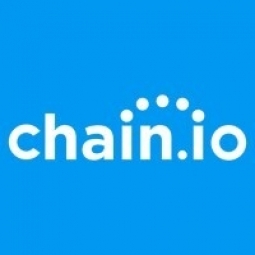
Supplier missing?
Start adding your own!
Register with your work email and create a new supplier profile for your business.
实例探究.
Case Study
OIA Global Enhances Visibility and Data Centralization with Chain.io
OIA Global, a supply chain management company offering global logistics and packaging optimization services, faced a significant challenge in providing a top-tier visibility experience to its customers. The company wanted its customers to have real-time information about the exact location of their shipments and their estimated arrival times. However, the task of gathering data from multiple sources, which often changed over the course of a shipment, and centralizing it into a single, user-friendly platform proved to be a daunting task. Additionally, the company had to deal with constant updates from technology partners, which were difficult to track and accommodate.
Case Study
Automating WMS Data for Enhanced Supply Chain Efficiency: A Case Study on Ligentia Global
Ligentia Global, a technology-focused Freight Forwarding Firm based in Leeds, UK, was facing a significant challenge in managing the data flow from their Transportation Management System (TMS) to their Warehouse Management System (WMS). The company, which provides a range of services including air, road, rail, and sea freight management, as well as warehousing, was struggling with disparities in the quality and file type of data ingested from various customers. This required custom development for nearly every customer and every job, leading to inefficiencies and delays in their shipping and receiving processes. The challenge was to streamline these processes without any risk of missed requests, while also providing their customers with complete visibility 24/7 and relaying complex data in simple and easy-to-understand formats.
Case Study
Magnate Worldwide: Streamlining Operations with Chain.io Integration
Magnate Worldwide, a global freight forwarder and customs brokerage based in Portland, OR, was grappling with two significant systems-related issues. Firstly, the executive and operational teams were finding it increasingly challenging to manage their business due to the need to access multiple different systems for an overview. This fragmentation was negatively impacting their efficiency and decision-making capabilities. Secondly, their customers, who were dealing with disparate data sources and platforms, were seeking a unified view of their data. The lack of a single, comprehensive system was causing frustration and inefficiencies, both internally and for their customers.
Case Study
Jaguar Freight Services: Accelerating Customer Integrations with Chain.io
Jaguar Freight Services, an international transportation and logistics company, was facing a significant challenge in customer integrations. Despite having a talented in-house development team, the process of integrating customers was taking longer than expected, diverting the team's focus from other crucial development projects. This delay was causing frustration among customers who were not only waiting for integrations but also for other functionalities that were put on hold due to the complex integration projects. The company's President and CEO, Simon Kaye, recognized this issue and sought a solution that would speed up customer integrations without compromising other development tasks.
Case Study
Janel Group Enhances Customer Response Time with Chain.io
Janel Group, a mid-size customs brokerage and freight forwarding company, was facing challenges with its outsourced integrations. The company had always relied on external partners for integrations, but these partners were not able to respond quickly or guarantee smooth projects. This was affecting Janel Group's ability to respond to its customers in a timely and efficient manner. The company did not have any internal developers and needed a reliable partner to manage its integrations and improve its customer response time.
Case Study
Bridging Technology Gaps: A Case Study on John S. Connor's Integration Success with Chain.io
John S. Connor, a global logistics company, was facing significant challenges due to its reliance on a legacy transportation management system (TMS). The outdated system was causing difficulties in integrating with customers who were using more modern systems. This lack of integration was impacting the company's ability to provide timely visibility to its customers. The situation was further complicated by the varying levels of technological sophistication among their customers. Some customers had their own internal development teams, others relied on external supply chain integration partners, while some had no technological support at all. John S. Connor had previously attempted to work with another integration partner, but progress was slow and customer service was being adversely affected.
Case Study
Managing Global Production
AutoZone was faced with the challenge of managing 'first-mile' production visibility across a diverse international supplier base. The company needed a solution that could provide comprehensive visibility and control over its global production and transportation processes. The challenge was further compounded by the need to integrate the solution with AutoZone's existing legacy ERP system without requiring extensive reprogramming.






